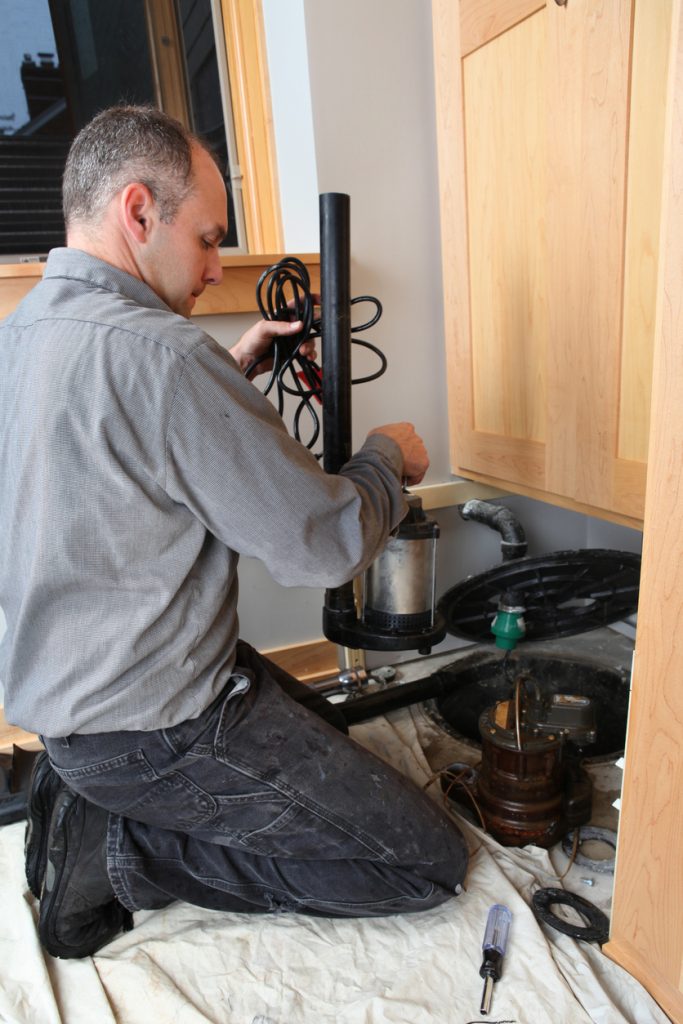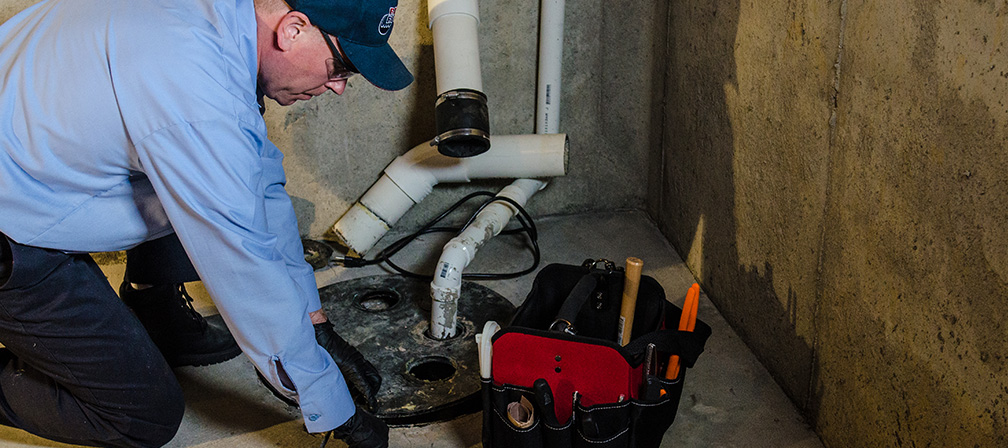Proven Methods for Taking Care of a Sump Pump
Proven Methods for Taking Care of a Sump Pump
Blog Article
We've uncovered this great article pertaining to How To Effectively Clean A Sump Pump below on the net and think it made good sense to discuss it with you on this site.

Sump pumps are critical parts in several homes, especially in locations susceptible to flooding or too much dampness. They assist avoid water damages by successfully getting rid of excess water from basements or crawl spaces. Nonetheless, like any other home appliance, sump pumps need normal upkeep to guarantee they function properly when needed one of the most. Cleansing your sump pump is a crucial part of its maintenance, and comprehending just how to do it correctly can conserve you from costly repair services and prospective catastrophes.
Introduction
Preserving a tidy sump pump is essential for its proper functioning and durability. Ignoring this necessary job can cause blockages, breakdowns, and eventually, water damage to your residential property. Consequently, discovering exactly how to clean a sump pump is crucial for house owners that count on these tools to maintain their cellars completely dry and protected.
Indications of a Dirty Sump Pump
Knowing when your sump pump needs cleansing is crucial for preventing prospective malfunctions. Some usual signs that indicate a dirty sump pump include odd noises during operation, reduced water circulation, and noticeable debris in the pit. If you discover any of these symptoms, it's necessary to cleanse your sump pump promptly to avoid any kind of additional issues.
Preparing for Cleaning
Prior to you begin cleaning your sump pump, it's essential to take some safety preventative measures. Begin by shutting off the power to the pump to prevent any kind of electrical mishaps. In addition, wear proper safety gear, such as gloves and goggles, to secure on your own from dirt, particles, and potential pathogens.
Understanding the Sump Pump
Prior to diving right into the cleansing process, it's essential to have a fundamental understanding of just how a sump pump works. Typically installed in a pit or container listed below the basement floor, a sump pump consists of several key components, consisting of a pump, a float switch, and a discharge pipeline. When water gathers in the pit, the float switch activates the pump, which after that pumps the water out with the discharge pipe, far from the building's foundation.
Detailed Guide to Cleansing a Sump Pump
Turning off the Power
Begin by disconnecting the power supply to the sump pump to stop any type of crashes while cleaning.
Checking for Appropriate Performance
Before reinstalling the pump, do a fast test to make certain that the float switch triggers the pump properly. Pour some water into the sump pit and observe the pump's operation. If whatever is functioning properly, you can reassemble the pump and reconnect the power supply.
Removing Debris and Dust
Utilize a bucket or an inside story to get rid of any type of visible particles, dirt, or debris from the sump pit. Dispose of the debris correctly to stop it from blocking the pump or the discharge pipe.
Cleansing the Pump and Drift Switch
As soon as the pit is clear of debris, thoroughly get rid of the pump from the pit. Check the pump and the float button for any kind of indications of damage or wear. Make use of a soft brush or towel to clean up the surface areas and get rid of any accumulated gunk.
Flushing the System
After cleaning up the pump and float button, purge the sump pit with clean water to get rid of any staying dirt or sediment. This will help make sure that the pump operates smoothly and effectively.
Maintenance Tips to Maintain Your Sump Pump Clean
Along with regular cleaning, there are numerous upkeep pointers you can follow to keep your sump pump in optimum problem:
Conclusion
Cleaning your sump pump is an important element of its maintenance and makes sure that it runs properly when you need it the most. By following the actions laid out in this overview and integrating normal upkeep into your routine, you can extend the life-span of your sump pump and shield your home from water damage.
6 STEPS ON HOW TO CLEAN A SUMP PUMP PROPERLY
UNDERSTANDING SUMP PUMPS
Your sump pump plays a crucial role in protecting your home by managing and removing excess water. It primarily functions as a “shield”, guarding your basement against the damaging effects of water accumulation. The pump is housed in a sump pit in the lowest part of your basement, and its job is to pump out any water that collects there.
During heavy rainfalls or when snow melts rapidly, water can infiltrate your basement, posing potential risks like flooding, structural damage, and harmful mold growth. Here, the sump pump springs into action, pumping out the intruding water and directing it away from your home.
SAFETY FIRST
Before cleaning, remember to prioritize safety. Disconnect the sump pump from the power source to prevent any accidental electric shocks. Also, wear sturdy gloves to protect your hands from any sharp or dirty components within the pump.
REMOVE THE SUMP PUMP
After ensuring your safety, the next step is to remove the sump pump from its pit. Doing this might require careful maneuvering as you don’t want to damage any pump components. Once removed, clean the sump pit to remove any accumulated debris or sludge.
INSPECT THE PUMP
Inspect the pump for any visible signs of wear or damage. Check the power cord, float switch, and impeller housing. If any components look worn out or damaged, consider replacing them to ensure optimal performance.
CLEAN THE PUMP
Thoroughly clean the pump with warm, soapy water. Make sure to rid it of any dirt, gravel, or other debris that might impede its performance. You can use a toothbrush to clean the small, hard-to-reach parts of the pump.
REINSTALL THE SUMP PUMP
Reinstall the pump into the sump pit Make sure it’s positioned correctly to remove the water effectively Once it’s back in place, reconnect it to the power source TEST THE PUMP
Finally, pour some water into the pit to ensure the pump works correctly. It should start automatically and begin pumping out the water; if it doesn’t, check the power source and the positioning of the pump.
Remember, while cleaning your sump pump is an essential part of home maintenance, hiring a professional plumber for a thorough inspection and cleaning at least once a year is also important. This will ensure that your pump is in optimal condition, ready to protect your home from potential water damage.
BEST PRACTICES FOR CLEANING SUMP PUMP DISCHARGE PIPES
Regular Inspection: Regularly inspect your discharge pipes, especially during heavy rainfall or snowmelt periods. Look for any signs of blockage or damage. Early detection of problems can prevent serious issues down the line. Periodic Cleaning: Over time, sediment and debris can accumulate in the discharge pipes, impeding the flow of water. Regular cleaning helps keep the pipes clear and functioning efficiently. You can use a high-pressure water jet to effectively clean the pipes. Insulation During Winter: In colder climates, discharge pipes can freeze, blocking the outflow of water. Protect your discharge pipes from freezing temperatures by insulating them with foam pipe insulation. This will ensure the sump pump can continue to discharge water even in freezing conditions. Proper Positioning: The discharge pipe should be positioned to direct water away from your home’s foundation. Improper positioning can lead to water seeping back into the basement. Ensure the pipe is long enough and angled correctly. Installation of a Check Valve: A check valve prevents water from flowing back into your sump pit after the pump has pushed it out. Installing a check valve helps maintain the efficiency of your sump pump and reduces the risk of flooding. Minimize Pipe Turns: Every curve or turn in the discharge pipe can decrease the efficiency of water flow. By minimizing turns and bends in your discharge pipe, you can increase the efficiency of your sump pump. https://www.fullspeedplumbing.com/how-to-clean-a-sump-pump-properly9999/

As an enthusiastic person who reads about Cleaning & Maintenance Tips for Your Home's Sump Pump, I assumed sharing that excerpt was a great idea. Sharing is good. Helping others is fun. We value reading our article about How To Effectively Clean A Sump Pump.
Contact Us Report this page